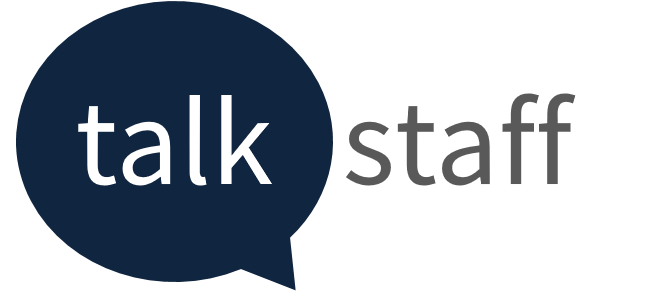
Understanding Sick Leave in the UK: Key Statistics
Exploring sick leave UK statistics and how things are changing over time. Sick leave is a vital component of employee welfare, ensuring that workers can take the necessary time off to recover from illness. Without the fear of losing their jobs.
In the UK, sick leave policies are governed by both employer guidelines & HR policies as well as national regulations, including Statutory Sick Pay (SSP). This blog delves into the latest statistics on sick leave in the UK. Exploring current sick leave policies, and provides insights into the government’s evolving stance on employee health.
Need HR Support? – Explore our Outsourced HR Services
How many days are lost to sick leave each year?
Around 185.6 million working days were lost to sickness or injury in the UK in 2022, which was a record high.
How many days off sick does each employee take?
On average, employees in the UK take 5.7 days sick leave a year (from 2022 data).
How many employers offer full pay for sick leave as an employee benefit?
61.7% of employers across the whole economy offer full pay. Including SSP for their occupational sick pay schemes with 92.6% of the public sector benefiting from the scheme.
This has a led to challenges within the public sector, especially as this is often funded by the UK taxpayer. For example, if public sector employees absenteeism matched the same lower rate as private sector employers then the government could regain up to £54.8 million worth of working time per year.
Other companies are introducing mental health days to include times when employers aren’t ‘sick’ in the traditional sense but need time off without the caveat of giving a physical reason.


Sick Leave Figures for HR
What are the top reasons for employees taking sick leave?
Statistics from ONS in 2022:
- 29.3% of sick leave is down to minor illnesses. There are many things leaders and HR teams can do to lower this amount. For example, minor illnesses are exacerbated by increased workplace stress or proximity in the office to contagious individuals. It’s helpful to adapt your HR policies to make it clearer. For example when employees should work from home (or consider sick leave) to prevent infections spreading.
Bear in mind that hybrid working often means people still work whilst ill rather than taking time off to fully recover which can vastly reduce their productivity and prolong their illness. Equally if you’re exploring return to the office options read this first.
- 10.5% Musculoskeletal problems – Musculoskeletal disorders (MSD) are injuries or disorders of the muscles, nerves, tendons, joints, cartilage, and spinal discs and Work-related musculoskeletal disorders can contribute to sick leave from these conditions, therefore it’s important to use DSE assessments (display screen equipment) and other H&S measures to support individuals with their conditions.
- 7.9% Mental Health – Poor mental health costs companies £51 billion per year but the good news is there are many ways employees can improve wellbeing at work and even influence external factors such as financial stress.
- 8.3% respiratory conditions – This rose significantly during the pandemic but has continued to be influenced by weakened immune systems although many claim ‘Immunity Debt’ is a theory which does not hold weight. There have also been surges of illnesses such as whooping cough.
There are also ways in which employees can lower absenteeism by making accommodations, such as for neurodivergent staff in the workplace or for menopausal symptoms.
Effect of dependants on absenteeism – Children and older people
The hygiene hypothesis shares that children have been less exposed to germs over time, especially during lockdown and this has impacted younger children coupled with a drop in childhood vaccinations which has led to the re-emergence of measles.
There have also been surges of contagious illnesses which is impacting vulnerable members of society. The government recently introduced one week of carer leave as part of their HR and payroll legislation to help with the pressures many workers face of looking after elderly or disabled relatives suffering from a variety of conditions.


Chart from ONS Report
Sick leave by industry UK statistics
A recent sick leave report showed the industries with the least sick days taken and the top ones and it’s good news for recruitment!
Here they are as a total per company on average for private sector companies.
Which industries have the lowest sick leave?
12 days – Recruitment
12 days – Admin and support service activities
30 days – Accommodation and Food service Activities
40 days – Information and communication
95 days – Construction
Which industries have the highest sick leave?
These figures demonstrate the importance of H&S within industries too.
255 days – Agriculture, Forestry and Fishing
199 days – Manufacturing
156 days – NGO/Charity
144 days – Financial and Insurance Activities
135 days – Electricity, Gas, Steam, & Air Conditioning Supply
Sick Leave Figures for Payroll
What is the weekly rate for Statutory Sick Pay (SSP) in the UK?
The current rate of Statutory Sick Pay (SSP) is £116.75 for up to 28 weeks. This is paid for the days an employee would normally work, known as ‘qualifying days’ and paid alongside payslips, deducting both National Insurance Contributions and Tax. SSP is paid when an employee is sick for more than 3 days in a row (including non-working days). Sick leave also has other rules around self-certification.
After 7 days employees must give their employer a sick note or ‘fit note.’ This fit note must be issued by a healthcare professional, typically a GP, however the government announced in 2024 that they are looking to change this in response to ‘sick note culture.’
Many companies use a return to work form or meeting as an informal chat to ensure colleagues are supported on their return to work. This is another addition companies can add to their HR policy.
After Payroll Support? – Explore our UK Payroll Services
Sick Note Culture Government Plans
During the Spring of 2024, Rishi Sunak, the Prime Minister at the time of writing announced a review of current sick leave policies with a view to tackle sick note culture. The government claim this as a commitment to supporting employee health and wellbeing including potential reforms to make SSP more accessible and supportive for employees, especially those in lower-paid or insecure jobs. The UK has one of the lowest SSP levels amongst the richest nations in the OECD.
However, critics of the review have grave concerns about the plans to remove GPs from the sick note process, here’s a roundup of some of the reactions:
Pindi Bath Assoc CIPD – “I will be very interested to see how this unfolds and the impact it might have on overall absence rates.”
Donna Okell – “The gap between those who have choices and don’t continues to widen.”
Natalie Lewis – “It’s about shifting our perspective to empower and enable”
Ruth Cooper-Dickson (she/her) “I thought my Friday morning was going well, until I read this news article.”
Liz Terry – “Great to see this move, let’s focus on what adjustments or support employees need.”


Here’s how people reacted to a poll from our marketing manager Hannah Ingram.
Why Sick Leave Statistics Matter to Employers
With millions of working days lost annually to illness, it is clear that sick leave is a crucial issue. The government’s ongoing reviews and potential reforms, particularly regarding SSP, reflect the importance of adapting to current health challenges and ensuring that all employees have access to adequate support when they need it most.
However there is a lot of individual responsibility too including many ways organisations and HR teams can reduce sick leave by improving wellbeing and offering workplace accommodations.
In addition employees should be provided with resources to help them outside of work, from offering EAP programmes to support with their mental health, ideas to manage financial stress and helping staff build good habits through mindfulness sessions, sleep hygiene and more.
Has Payroll and HR admin got your head spinning?
If you’d rather spend your time on productive projects and growing your business then wave goodbye to time-consuming HR and payroll admin.
Speak to our friendly team – we offer experience, accuracy and quick responses. What’s more, as a people consultancy we’re able to provide more strategic approaches to reducing absenteeism and improving team productivity. Interested? Drop us a line and tell us a little more about your challenges.
Want the latest HR & Payroll News Straight to your Inbox?
Join our Newsletter for great insights and resources
Last Updated on 2 months by Hannah Ingram






